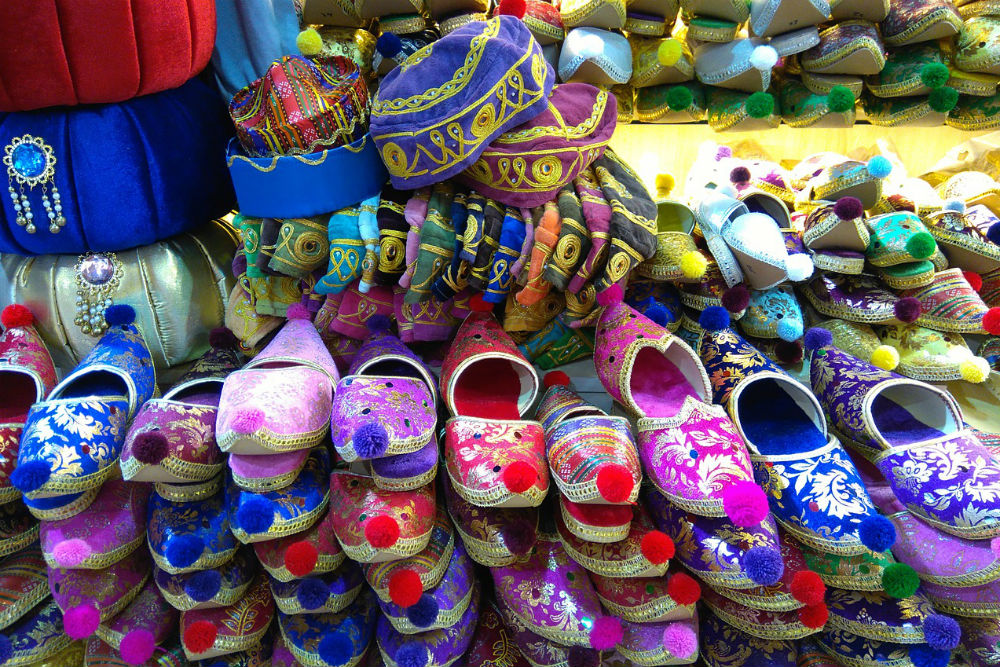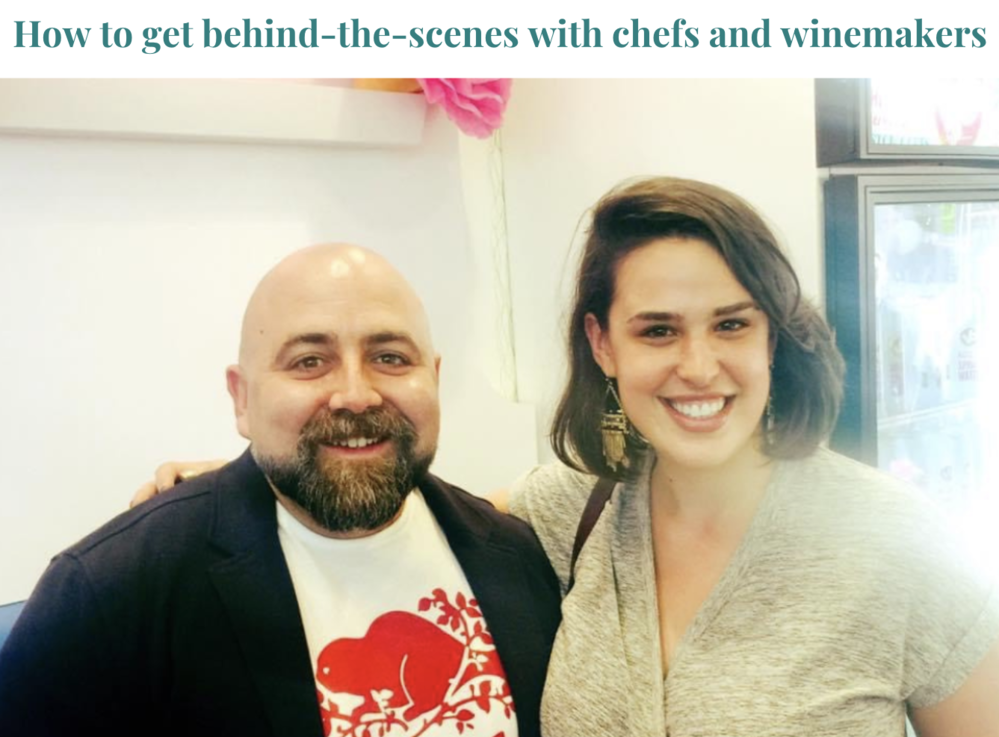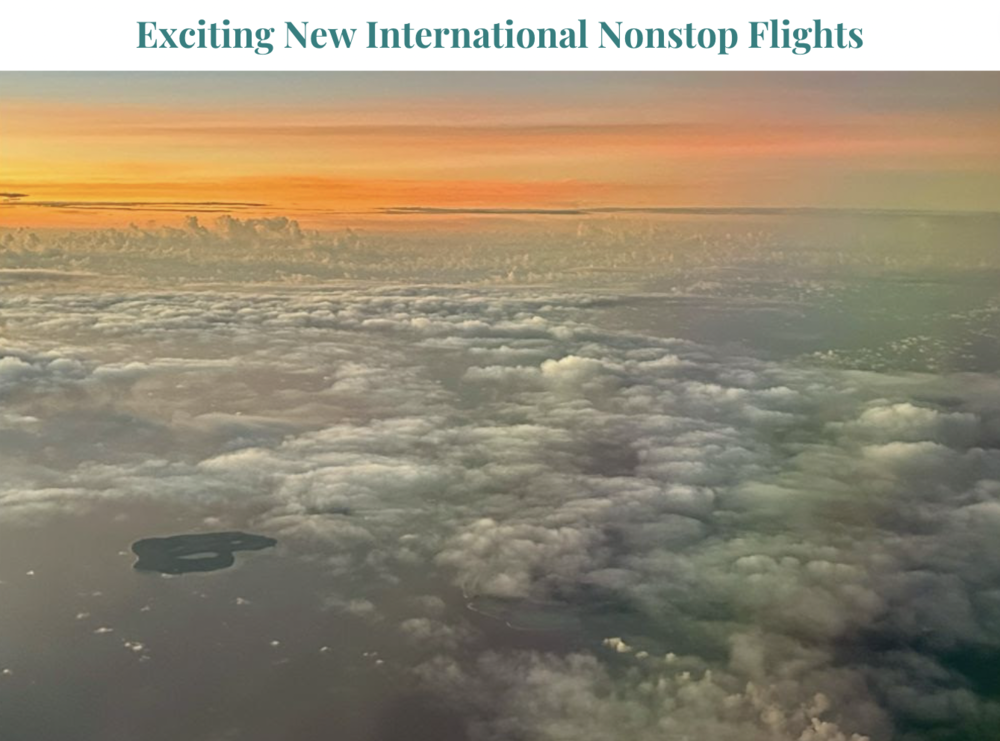Authentic Craft Markets Worth Traveling the World For
 The Grand Bazaar is the world’s oldest shopping mall and, with 4,000 stores, perhaps still the biggest. Photo: emahmuzlu/Pixabay
The Grand Bazaar is the world’s oldest shopping mall and, with 4,000 stores, perhaps still the biggest. Photo: emahmuzlu/Pixabay No matter where you are in the world, an authentic street market is the perfect place to immerse yourself in a community. A few hours wandering through the maze of stalls will tell you what that society values (whether it’s textiles, secondhand books, or cigars) and how the local economy works (a diminutive grandmother bargaining with cut-throat aptitude, or a farmer bartering livestock in exchange for pots and pans). Plus, you can pick up some high-quality souvenirs, often purchasing directly from the artisan.
So we asked the Trusted Travel Experts on Wendy’s WOW List: Which markets are most worth a traveler’s precious time? Here are some of their favorites for finding locally produced handicrafts:
Pisac Market—Pisac, Peru
The Place: The Pisac market is one of the largest traditional markets in Peru and one of the liveliest Sunday markets in South America. Every Sunday morning, the main plaza is full of crafts by local artisans, plus a traditional Peruvian outdoor market with fruits and vegetables where locals shop and mingle with friends (a smaller food market is held on Tuesdays and Thursdays).
The Goods: The market is known for authentic crafts made by the Quechua inhabitants of nearby Andean villages, including high-quality hand-knit wools, ceramics, leather goods, and jewelry. There’s plenty for kids too: handmade wristbands, key rings, and small musical instruments.
Best Time to Go: Though you can stop by the food section of this market on Tuesdays and Thursdays, you really want to come on Sundays, when there is also a procession of varayocs (mayors and their deputies from nearby local villages), who make their way through town to the San Pedro Apóstol de Pisac church. Dressed in colorful ponchos and distinctive hats, the mayors carry silver-embossed staffs symbolizing their prominent office. The deputies blow conch shells to help clear the crowd as the mayors move through town.
Insider Intel: If you’re driving to Pisac from Cusco, don’t miss the cooperative of Awana Kancha en route, where 14 communities practice various forms of ceramics in an educational workshop setting. And after exploring the Pisac market, venture up to the Incan ruins perched spectacularly overlooking the Sacred Valley. This is one of the most well-preserved Incan sites outside Machu Picchu.
—Tom Damon, Trusted Travel Expert for Chile, Ecuador, Peru, and Patagonia
Chinchero Market—Chinchero, Peru
The Place: Known for its commanding view of the surrounding snowcapped mountains and its centuries-old houses, Chinchero is a quaint highland community that is characteristic of Andean towns, with a combination of both Incan and colonial architecture. The village once served as a country estate for Tupac Inca, one of the early Incan rulers. Chinchero’s inhabitants continue to honor their Inca ancestors by passing their weaving skills from generation to generation and dressing in traditional Quechua clothing.
The Goods: Woven goods, particularly belts (fajas) and shawls (mantas).
Best Time to Go: The market is held on Sunday mornings in the main square.
Insider Intel: This is an ideal place to catch local inhabitants following the age-old traditional barter system of trueque. Tom can also arrange lunch with a weaving expert at her home, where you’ll get an overview of the Andean weaving process and participate while wool is carded, spun, and dyed, learning about the different techniques used to create these textiles.
—Tom Damon, Trusted Travel Expert for Chile, Ecuador, Peru, and Patagonia
Otavalo Market—Otavalo, Ecuador
The Place: The Lake District community of Otavalo is home to one of South America’s largest and most vibrant markets, dating back centuries to when Indians from the lowland jungles would visit the highlands to trade their products. Produce and craft stalls are set up in four plazas, overflowing into the streets.
The Goods: Don’t miss the exquisite woolen products and embroidery work for which the Otavalo weavers are renowned. You’ll also see ceramics, wood carvings, and leather goods from all over the country.
Best Time to Go: Saturday is market day; arrive early (7–9 a.m.) to catch the colorful action of the live animal auction, where Otavaleños practice a unique form of silent bartering.
Insider Intel: The Otavalo weavers are renowned for their talent, which, combined with a sharp business sense, has made them one of the most prosperous of all indigenous groups in South America. Near Otavalo are small artist towns (Cotacachi and San Antonio) known for their leather work at good prices, as well as bread dough artists, hat makers, handmade wood crafts, stone sculptures, and a variety of authentic artesanía.
—Tom Damon, Trusted Travel Expert for Chile, Ecuador, Peru, and Patagonia
Monastiraki Flea Market—Athens, Greece
The Place: Stretching from the famous Plaka district to the trendy neighborhood of Thiseio, this open-air market forms a pedestrian-only ring around the foot of the Acropolis, in the historic center of Athens; it has been the meeting place of locals and travelers for thousands of years.
The Goods: Monastiraki is not your typical flea market. The most central market of such a diverse city, it has a little bit of everything, including numerous traditional and trendy shops, bars and cafés, traditional tavernas and restaurants, street performers, and of course historic ruins. Because it caters to both locals and visitors, there are many small shops that offer traditional Greek products, as well as more typical souvenirs: handmade leather goods, independent artisans’ crafts, clothing, secondhand books, and even some antiques.
Best Time to Go: Because of its central location, Monastiraki is buzzing with people pretty much around the clock, every day of the week. If you’re not one for crowds, visit during the morning, when the streets are quieter and shop owners are just starting their day. If you don’t mind crowds and enjoy a little bargaining, then come on a Sunday when it actually does resemble a flea market; in addition to the shops, street vendors set up tables or roll out a carpet to sell any number of things, from trinkets to interesting old books, coins, and furniture.
Insider Intel: The most traditional souvenirs here are the well-known komboloi (“worry beads”) or a pair of handmade tan-leather Greek sandals; the best of the footwear options are made to measure.
Grand Bazaar—Istanbul, Turkey
The Place: The Grand Bazaar is the world’s oldest shopping mall and, with 4,000 stores, perhaps still the biggest.
The Goods: Ceramics, hand-hammered copper, silver, textiles, jewelry, carpets, pashmina scarves, spices, Turkish delight, evil eyes.
Best Time to Go: The bazaar is open every day but Sunday. I like going in the early morning or late afternoon during the week, when it’s not too crowded.
Insider Intel: Don’t go home without a carpet; it is the art of Turkey. Orient Handmade Carpets is a very reputable shop just outside the Grand Bazaar, with the best selection in the entire country.
—Karen Fedorko Sefer, Trusted Travel Expert for Turkey
Bac Ha Market—Sapa, Vietnam
The Place: Many different ethnic minorities barter and sell their goods at this market, one of the busiest in the region. It’s also the most colorful, with the Flower Hmong people dressed in traditional costume. Thanks to all of the activity and imagery, it’s a photographer’s dream.
The Goods: The Flower Hmong sell mostly local products such as traditional clothes, materials, foods, homemade wine, and herbal medicines. There are also farm animals: horses, water buffaloes, pigs, and chickens. The handmade embroidered items make great souvenirs.
Best Time to Go: This market takes place every Sunday, but the best time to explore it is from 8 a.m. to noon during the fall, when the weather is best (which means it’s not only more pleasant for travelers, but better attended by locals).
Insider Intel: Haircuts are another popular reason to attend the market—men often come from the mountain villages to go to the barbershops.
—Andrea Ross, Trusted Travel Expert for Southeast Asia
Chatuchak Market (a.k.a. the Weekend Market)—Bangkok, Thailand
The Place: People claim that Chatuchak is the largest outdoor market in the world; it’s truly one of those markets where you get to mix with locals doing their own shopping, and where you’ll find local products at great prices. If you are into art, they have it. If you are into antiques, they have it. If you are into new fashion designers, they have it. If you are a foodie and want to sample local dishes, they have it. There is something for everyone, and the people-watching is out of this world.
The Goods: You can buy practically anything and everything there, from vintage clothes to handmade soap to artwork to living animals to souvenirs.
Best Time to Go: This market is only open on weekends; mornings are best because it gets really hot in the afternoon.
Insider Intel: After walking around for a couple of hours, you should definitely get a foot massage for just $5; they’re widely available throughout the market.
—Andrea Ross, Trusted Travel Expert for Southeast Asia
Mani Sithu Market—Nyaung U, Myanmar
The Place: The colors, sights, and sounds make this market one of those that stick in the mind for a lifetime. It is real, and needed for the locals, but it is also friendly and approachable for visitors—and it’s a labyrinth, which adds to its mystique. Many travelers drive right by on their way to Bagan (the village of Nyaung U is the main access point for that ancient city), but I find that after some temples, a bit of market time shocks the system out of the meditation of architecture and history, bringing you right back to the present.
The Goods: Like a Burmese Walmart, you’ll find everything you would ever need here: food, clothing, medicine, even cars. This region is particularly famous for its lacquerware, which is light and easy to bring home.
Best Time to Go: Mid-morning any day of the week.
Insider Intel: Try mohinga, a Burmese fish soup that is served all day—it’s one of those tastes that captures a whole experience in one spoonful.
Hyakumanben Flea Market—Kyoto, Japan
The Place: Kyoto’s Chionji temple hosts the Hyakumanben flea market on the 15th of each month in a beautiful garden setting, attracting many colorful stalls full of local artisans who would not otherwise be able to afford a permanent retail space in Kyoto.
The Goods: All kinds of artisanal crafts, including geta (wooden slippers), washi paper, lacquered umbrellas, exquisite Japanese fans and paper lanterns, yukatas, and a multitude of items you will not find anywhere else. Many stalls also offer local delicacies to munch on, such as miniature koi-shaped waffles with a red bean filling, or crispy rice crackers coated in soy sauce.
Best Time to Go: The market is only open once a month, on the 15th. In May, the market coincides with the Aoi Matsuri Festival, when locals don a costume from the Heian period and make offerings to the Shimogamo shrine nearby; it’s like being on the set of a period drama.
Insider Intel: The small bath towels block-printed with Japanese themes are useful if you’ll be visiting a ryokan or onsen spa later in your trip.
Le Marché—Papeete, Tahiti
The Place: This is the only major public market in French Polynesia; you can shop, eat, browse, and also get a glimpse of the culture. If you visit at the beginning of your trip, it’s a quick education on what to expect on the outer islands; if you visit at the end, you can pick up all the gifts you might want to bring home.
The Goods: I like to say that anything and everything that is Tahitian is sold at Le Marché: skin oils, soaps with tropical fragrances, creams, vanilla in different forms, beautiful hand-woven hats and baskets, carved wooden bowls from the Marquesas, pareos (the festively patterned cloths wrapped around the body by both men and women here), cultured pearls—even traditional tattoos. Locals go to Le Marché for produce, fresh fish, flowers, and ready-made meals and snacks; there are a few sit-down restaurants upstairs where you can have an excellent and inexpensive meal.
Best Time to Go: On a Saturday morning, when the market is busiest with food, flowers, and people. Be sure to make time for a café au lait with coconut milk and a croissant.
Insider Intel: Pick up some miraculous Tamanu oil, which will heal virtually any skin irritation.
—Kleon Howe, Trusted Travel Expert for Tahiti, Bora Bora, and French Polynesia
Toki Zargaron Trade Dome (a.k.a. Chorsu Bazaar)—Bukhara, Uzbekistan
The Place: This trading dome was once a major stop on the Silk Road; the bazaar has a large central dome and four passages with smaller domes, where caravans came from four different directions for trade and exchange throughout the centuries. Today, visitors come to enjoy authentic sweet Uzbek green tea and watch real craftsmen at work.
The Goods: You’ll find all sorts of textiles—intricate embroidery, Ikat-patterned silk, and other traditional techniques—wood carvings, straw artwork, jewelry, and much more.
Best Time to Go: The bazaar is open every day; Sunday is the best day to visit, when many locals are out shopping. Since most tour groups come in the morning, I recommend that travelers visit the market around 3 p.m. You’re more likely to get some one-on-one time with the artisans that way, learning about the process of making their crafts. Also, their families or students often join them in the afternoon, and it’s fun to see several generations at work.
Insider Intel: I can arrange for my clients to actually participate in making embroidery, metal plates, or wood carvings, or to shop at the market with a chef for the ingredients to make bread or pilaf.
—Zulya Rajabova, Trusted Travel Expert for Uzbekistan and the Silk Road
All of these Trusted Travel Experts arrange magnificent start-to-finish trips for travelers. Click on their links to read what makes them the best itinerary designer for their destination or to request a trip. From there, click on “Read Reviews” (below their photo) to find out how they can maximize your experience of their destination.
Be a smarter traveler: Use Wendy’s WOW List to plan your next trip. You can also follow her on Facebook and Twitter @wendyperrin, and sign up for her weekly newsletter to stay in the know.








Great suggestions, thank you! Happy to say we have been to more than a couple and we head for a Tahiti cruise in a couple of weeks and I had heard about the market in Papeete. Sounds terrific for the day when we return from the cruise. And you have whetted our appetite for going to South America.
We had our driver take us to a great craft market in Ubud, Bali a couple of years ago. My wife hunts for these kind of places (and experiences!) and we were not disappointed. I don’t know the name but perhaps something to research as Bali is a popular place.
Enjoying your blog. Thank you! -joe
Thanks for the tip, Amelia! I hope to check out the Maasai market next time I’m in Nairobi.
Not a single one in all of Africa? Try the Tuesday market at the Mud Mosque in Djenne.
Or the Maasai market on Fridays at the Village Market in Gigiri, a suburb just outside of Nairobi. There you’ll find curios, fabric with east African prints, jewelry, paintings, wood carvings and clothing by local artisans.